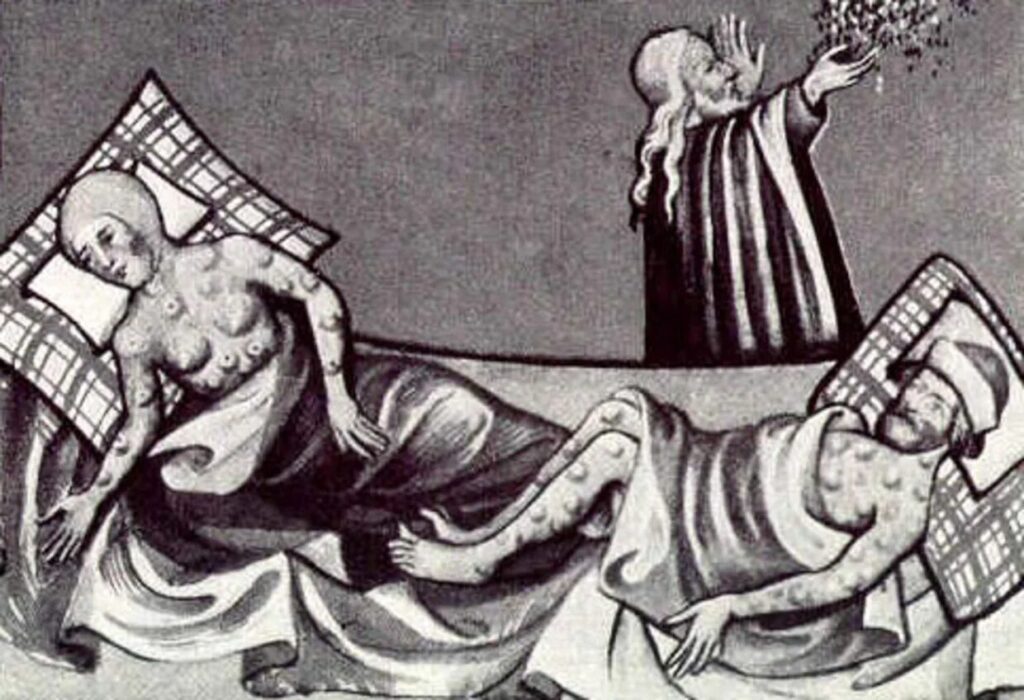The Black Death just hearing the name can send shivers down your spine. This catastrophic plague swept across Europe in the mid-14th century, leaving a trail of devastation in its wake. But beyond the immediate horrors, the Black Death had profound and lasting effects on society, many of which still shape our world today. Let’s delve into the long-term impact of this deadly pandemic.
The Arrival of the Black Death

The Black Death, caused by the bacterium Yersinia pestis, arrived in Europe in 1347, likely brought by trade ships from the East. It spread rapidly, killing an estimated 25 to 50 million people nearly a third of Europe’s population. But the story doesn’t end there. The repercussions of this plague would ripple through centuries.
A Society Decimated
When the Black Death struck, society as people knew it crumbled. Entire villages were wiped out, and cities were left eerily empty. The sheer scale of death had far-reaching consequences for every aspect of life.
Economic Upheaval
The Labor Shortage
Imagine waking up one day to find that half your community has vanished. With so many people dead, labor became a scarce commodity. Landowners, once secure in their wealth, found themselves desperate for workers to till their fields and harvest their crops.
Rise of the Working Class
This labor shortage gave peasants and workers newfound bargaining power. They could demand higher wages and better working conditions, challenging the traditional feudal system. Over time, this shift planted the seeds for modern capitalism.
Collapse of Feudalism
The feudal system, which had dominated Europe for centuries, began to crumble under the weight of the Black Death. With fewer peasants tied to the land, serfdom declined, paving the way for a more flexible and mobile workforce.
Social and Cultural Shifts
A New Perspective on Life
Living through a pandemic that spared no one rich or poor, young or old left people questioning their beliefs. Religious institutions, which had offered comfort and stability, were often powerless against the plague.
Decline in Church Authority
The inability of the Church to protect people from the plague led to a decline in its authority. Some turned to mysticism or fringe religious movements, while others embraced a more secular outlook.
Art and Literature Reflect Change
The Black Death also left its mark on art and literature. Works from this period often depicted themes of death and mortality. The iconic image of the “Danse Macabre,” or Dance of Death, emerged as a reminder of life’s fragility.
Public Health Measures Emerge
The Birth of Quarantine
To combat the spread of the plague, cities began implementing public health measures. One of the most significant innovations was quarantine. The term comes from the Italian word quaranta, meaning forty, as ships suspected of carrying the plague were isolated for 40 days before passengers could disembark.
Early Epidemiology
These rudimentary health measures marked the beginnings of epidemiology and public health systems, laying the groundwork for modern approaches to disease control.
Urban Development Transformed
Rebuilding Cities
The Black Death led to a wave of urban renewal. Many cities, ravaged by the plague, were rebuilt with better infrastructure. Wider streets, improved sanitation, and cleaner water supplies became priorities.
Rise of the Middle Class
With the decline of feudalism and the rise in wages, a new middle class began to emerge. This group played a crucial role in shaping the cities of the future.
Advances in Medicine
A Scientific Revolution
The Black Death exposed the limitations of medieval medicine, which relied heavily on superstition and outdated theories. In response, a more scientific approach to medicine began to take root.
Dissection and Anatomy
The pandemic spurred interest in human anatomy and the study of diseases. Dissections, once taboo, became more common as people sought to understand the human body and its vulnerabilities.
Agricultural and Environmental Changes
Shift in Land Use
With fewer people to work the land, large estates were often abandoned. This led to a shift from labor-intensive farming to less demanding methods, such as sheep herding.
Reforestation
The depopulation caused by the Black Death also had environmental consequences. Abandoned farmland reverted to forests, which in turn helped to stabilize ecosystems.
Psychological Impact
Collective Trauma
The psychological toll of the Black Death cannot be overstated. Entire generations grew up in the shadow of the plague, shaped by its devastating effects.
Fear and Superstition
Fear of the plague fueled superstition and scapegoating. Minority groups, such as Jews, were often blamed for the pandemic, leading to violence and persecution.
Resilience and Adaptation
Despite the trauma, societies adapted and found ways to move forward. The resilience of communities in the face of such adversity is a testament to the human spirit.
The Black Death’s Influence on Modern Pandemics
Lessons Learned
The Black Death taught humanity valuable lessons about disease prevention and control. These lessons have been applied in subsequent pandemics, from the Spanish flu to COVID-19.
Importance of Hygiene
The emphasis on hygiene and public health that emerged during the Black Death continues to be relevant today. Practices such as handwashing and quarantine remain essential tools in combating infectious diseases.
The Legacy of the Black Death
The Black Death was a turning point in history. It reshaped economies, transformed societies, and altered the course of human development. While the pandemic was a tragedy, it also sparked innovation and progress, leaving a legacy that endures to this day.
FAQs
1. What caused the Black Death?
The Black Death was caused by the bacterium Yersinia pestis, which was transmitted through fleas that lived on rats. It spread rapidly due to poor sanitation and the movement of people and goods.
2. How did the Black Death affect the economy?
The Black Death caused a severe labor shortage, leading to higher wages and better working conditions for peasants. It also contributed to the decline of feudalism and the rise of capitalism.
3. Did the Black Death lead to medical advancements?
Yes, the Black Death exposed the limitations of medieval medicine and spurred interest in scientific approaches to health and disease, including the study of anatomy.
4. How did the Black Death influence urban development?
The pandemic led to urban renewal, with cities prioritizing better infrastructure, sanitation, and public health measures to prevent future outbreaks.
5. What is the significance of the “Danse Macabre”?
The “Danse Macabre” is a cultural motif that emerged after the Black Death, symbolizing the universality of death and the fragility of life. It became a powerful reminder of mortality in art and literature.
Meta Description
Discover the profound and lasting effects of the Black Death on society, from economic upheaval and urban transformation to advances in medicine and public health.


